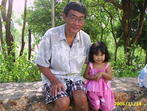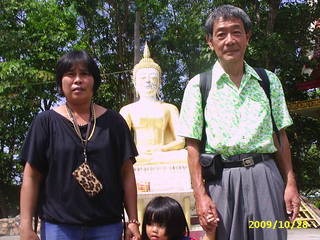2012年01月28日
発信箱:粉になる=滝野隆浩(社会部)
こんなことをして葬儀に莫大なお金をかけるのはいかがなものか?
そのうち、ご遺体をロケットで宇宙に向けて発射する宇宙葬が大流行するのかもしれませんね^^。
「死んだら、それでジ・エンド、おしまい」はカフェ友ヤングセイラーさんのお言葉です^^。
やはり神や仏様は私たちの心の中だけに存在するものなのでしょうね。多分これで間違いない。(汗)
(スラチャイ)
(Mainichi Japan) January 26, 2012
Dust to dust: A different approach to funerals
発信箱:粉になる=滝野隆浩(社会部)
"A spacious X square meters," "Faces south, gets plenty of sunlight!" -- these phrases on a cemetery ad at the station made me stop and
「ゆったり○平方メートル」とか「南向き、日当たり良好!」という駅の墓地広告をみて気づかされる。
Even after they die and are turned into bones, many people are concerned about comfort.
亡くなって骨になったあとも、「居心地」が気になる人が多いのだ。
In such cases scattering the person's ashes in the sea or on a mountain may seem like a good idea, but not everyone wants this.
ならば海や山に散骨するのもいいのだろうが、それを嫌がる人もいる。
Last autumn, I heard about a new freeze-drying approach in which liquid nitrogen is used to reduce the body to a powder, and then the remains are returned to the ground.
昨秋、「冷凍葬」の話を聞いた。液体窒素を使って遺体を粉末状にして土にかえしてくれるという。
Yuji Nakamura, a lawyer who went to Sweden to interview the company that holds a patent on this process, provided details on it at a meeting of Japan's council for promotion of a basic funeral law in Japan.
葬送基本法推進懇談会の会合で、スウェーデンに行って特許を持つ会社を取材した中村裕二弁護士が報告した。
After being submerged in liquid nitrogen with a temperature of minus 196 degrees Celsius for one hour, the person's body, which is broken up into dust and small pieces, is put into a vacuum container where the remains are slowly dried.
零下196度の液体窒素に1時間ほど漬けたあと、細かい破片・粉になった遺体を真空のドラムにいれてゆっくり乾燥。
Metals are then removed and the remains are placed into a container which is buried about 50 centimeters underground.
金属類を除去して容器に入れて、地表から50センチほどのところに埋める。
Between six months and a year later, the remains have completely been broken down into the earth.
半年から1年で容器ごと土にかえるという。
The attraction of this process is the part where the body is "slowly dried" -- showing that care is being taken over the remains.
「ゆっくり乾燥」というのがミソ。大事に扱うという配慮なのだ。
South Korea is already apparently preparing to introduce this process.
韓国では実用化の話が進んでいるそうだ。
A long time ago, there was a song in Japan containing the lyrics "hone made aishite" (love me down to my bones). 昔、流行歌に「骨まで愛して」というのがあった。
Here lies sentiment in which the person is crying out for love of their very existence.
存在そのものを本気で愛して、と叫ぶ情念の世界だ。
To Japanese people, bones are very important, and it is hard to stir up strength when thinking that they will become dust in the end.
But there is something refreshing about the new approach to funerals, a graciousness that comes from leaving all partings and lingering affection -- like the person is saying, "See you, bye-bye," and drifting away.
「お前の骨は拾ってやるぞ」という言葉もある。究極の信頼関係があるから言える。日本人にとって骨はとても大事なものなのだ。最後に粉になってしまうと力は入らない。けれど、何だかすがすがしくはある。この世の名残とか未練とかを、一切捨て去る潔さ。じゃあね、ばいばい、さらさらーっと。
The developer of the freeze-drying funeral method apparently says that a person's genes are a gift to their children and grandchildren.
冷凍葬の開発者は「自分の遺体は子や孫へのギフト」と言っているらしい。
The thought of becoming part of nature matches Japanese people's view of nature.
人間も自然の一部とする、日本人の自然観に合っている。
In fact, Japan, which has few religious constraints, may be just the place for this process to receive public acceptance.
もしかしたら、宗教的な制約がほとんどない日本のほうが、受け入れられていくのかもしれない。
Also in environmental terms, overdevelopment of large grave sites is a problem.
大規模な墓地開発が進みすぎるのも、環境面では問題だ。
"There are various debates on the issue, but I think there should be a choice for funerals that are not limited to cremation," Nakamura says.
中村さんは「さまざま議論はあろうが、火葬だけじゃない、葬送の選択肢があっていいと思う」と話していた。
(By Takahiro Takino, Tokyo City News Department)
毎日新聞 2012年1月25日 1時35分
そのうち、ご遺体をロケットで宇宙に向けて発射する宇宙葬が大流行するのかもしれませんね^^。
「死んだら、それでジ・エンド、おしまい」はカフェ友ヤングセイラーさんのお言葉です^^。
やはり神や仏様は私たちの心の中だけに存在するものなのでしょうね。多分これで間違いない。(汗)
(スラチャイ)
(Mainichi Japan) January 26, 2012
Dust to dust: A different approach to funerals
発信箱:粉になる=滝野隆浩(社会部)
"A spacious X square meters," "Faces south, gets plenty of sunlight!" -- these phrases on a cemetery ad at the station made me stop and
「ゆったり○平方メートル」とか「南向き、日当たり良好!」という駅の墓地広告をみて気づかされる。
Even after they die and are turned into bones, many people are concerned about comfort.
亡くなって骨になったあとも、「居心地」が気になる人が多いのだ。
In such cases scattering the person's ashes in the sea or on a mountain may seem like a good idea, but not everyone wants this.
ならば海や山に散骨するのもいいのだろうが、それを嫌がる人もいる。
Last autumn, I heard about a new freeze-drying approach in which liquid nitrogen is used to reduce the body to a powder, and then the remains are returned to the ground.
昨秋、「冷凍葬」の話を聞いた。液体窒素を使って遺体を粉末状にして土にかえしてくれるという。
Yuji Nakamura, a lawyer who went to Sweden to interview the company that holds a patent on this process, provided details on it at a meeting of Japan's council for promotion of a basic funeral law in Japan.
葬送基本法推進懇談会の会合で、スウェーデンに行って特許を持つ会社を取材した中村裕二弁護士が報告した。
After being submerged in liquid nitrogen with a temperature of minus 196 degrees Celsius for one hour, the person's body, which is broken up into dust and small pieces, is put into a vacuum container where the remains are slowly dried.
零下196度の液体窒素に1時間ほど漬けたあと、細かい破片・粉になった遺体を真空のドラムにいれてゆっくり乾燥。
Metals are then removed and the remains are placed into a container which is buried about 50 centimeters underground.
金属類を除去して容器に入れて、地表から50センチほどのところに埋める。
Between six months and a year later, the remains have completely been broken down into the earth.
半年から1年で容器ごと土にかえるという。
The attraction of this process is the part where the body is "slowly dried" -- showing that care is being taken over the remains.
「ゆっくり乾燥」というのがミソ。大事に扱うという配慮なのだ。
South Korea is already apparently preparing to introduce this process.
韓国では実用化の話が進んでいるそうだ。
A long time ago, there was a song in Japan containing the lyrics "hone made aishite" (love me down to my bones). 昔、流行歌に「骨まで愛して」というのがあった。
Here lies sentiment in which the person is crying out for love of their very existence.
存在そのものを本気で愛して、と叫ぶ情念の世界だ。
To Japanese people, bones are very important, and it is hard to stir up strength when thinking that they will become dust in the end.
But there is something refreshing about the new approach to funerals, a graciousness that comes from leaving all partings and lingering affection -- like the person is saying, "See you, bye-bye," and drifting away.
「お前の骨は拾ってやるぞ」という言葉もある。究極の信頼関係があるから言える。日本人にとって骨はとても大事なものなのだ。最後に粉になってしまうと力は入らない。けれど、何だかすがすがしくはある。この世の名残とか未練とかを、一切捨て去る潔さ。じゃあね、ばいばい、さらさらーっと。
The developer of the freeze-drying funeral method apparently says that a person's genes are a gift to their children and grandchildren.
冷凍葬の開発者は「自分の遺体は子や孫へのギフト」と言っているらしい。
The thought of becoming part of nature matches Japanese people's view of nature.
人間も自然の一部とする、日本人の自然観に合っている。
In fact, Japan, which has few religious constraints, may be just the place for this process to receive public acceptance.
もしかしたら、宗教的な制約がほとんどない日本のほうが、受け入れられていくのかもしれない。
Also in environmental terms, overdevelopment of large grave sites is a problem.
大規模な墓地開発が進みすぎるのも、環境面では問題だ。
"There are various debates on the issue, but I think there should be a choice for funerals that are not limited to cremation," Nakamura says.
中村さんは「さまざま議論はあろうが、火葬だけじゃない、葬送の選択肢があっていいと思う」と話していた。
(By Takahiro Takino, Tokyo City News Department)
毎日新聞 2012年1月25日 1時35分
【このカテゴリーの最新記事】
-
no image
-
no image
-
no image
-
no image
-
no image
この記事へのコメント
コメントを書く





